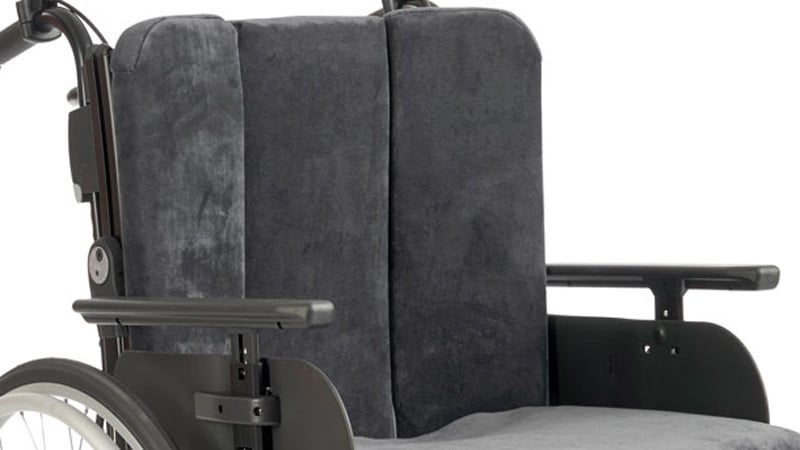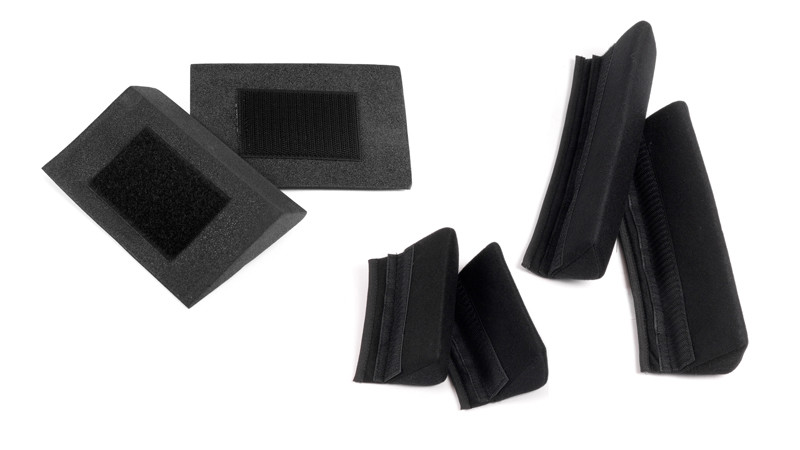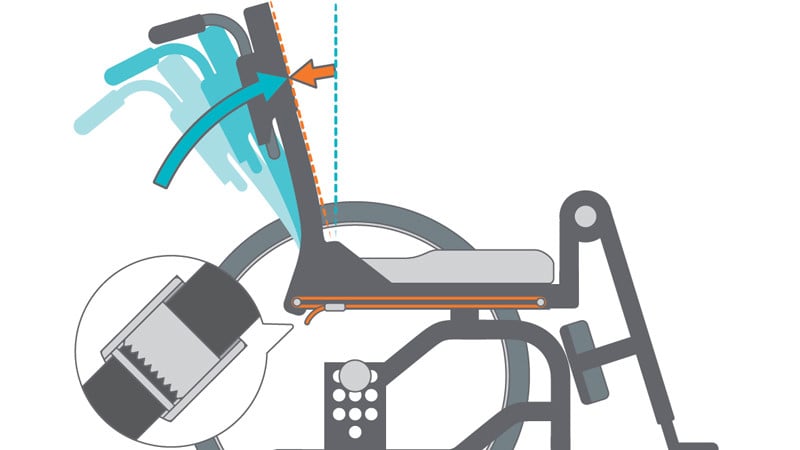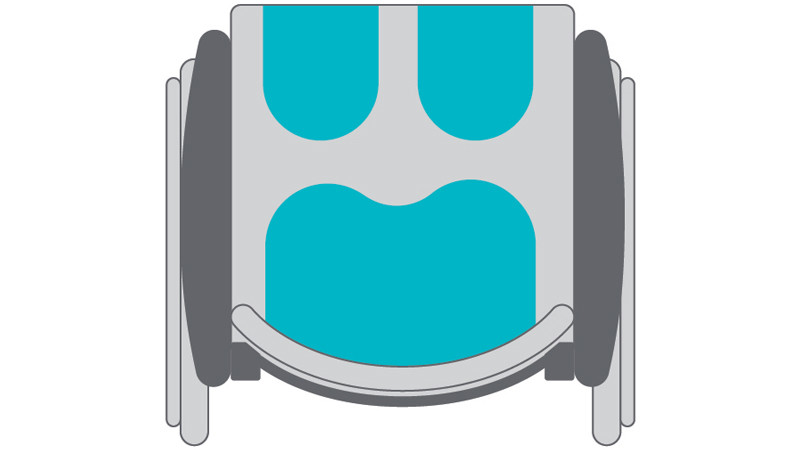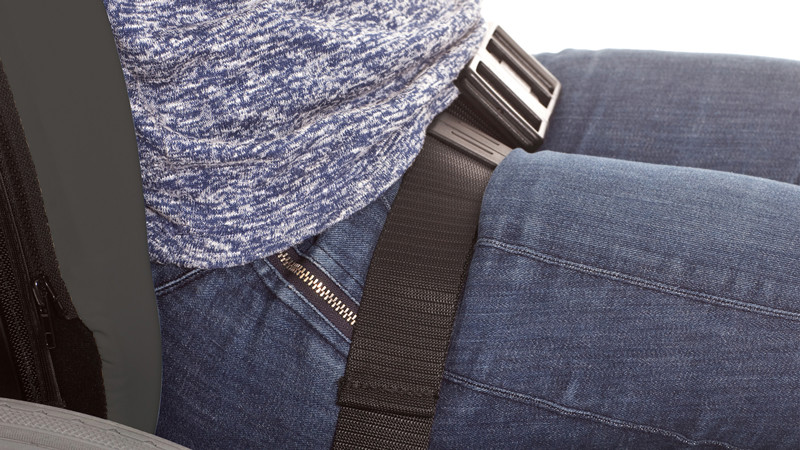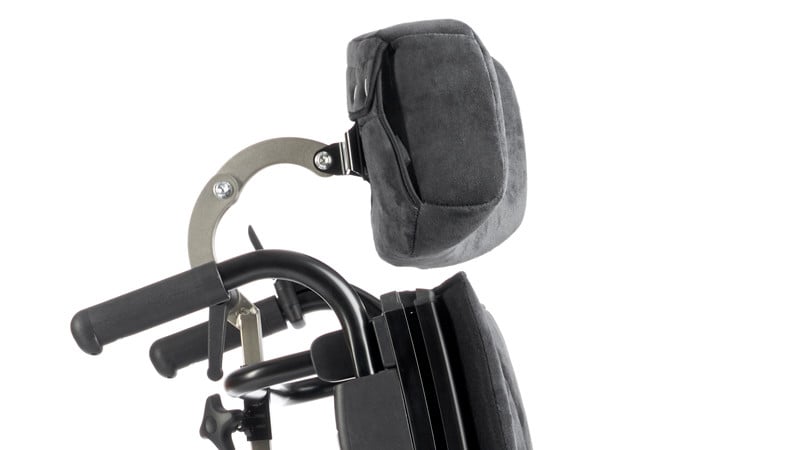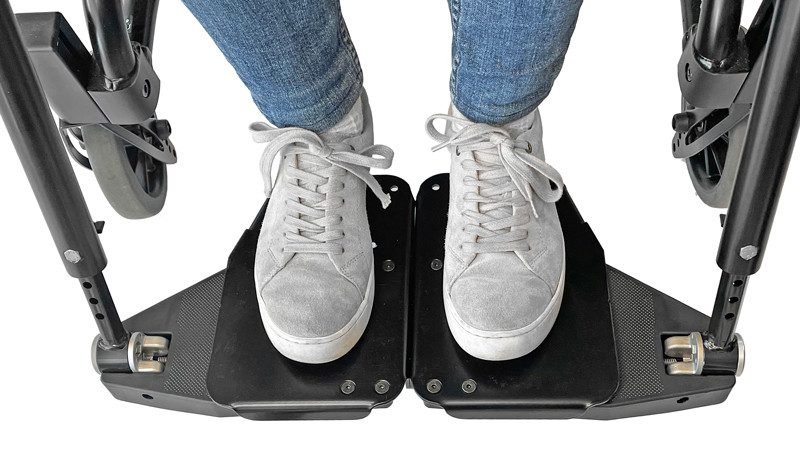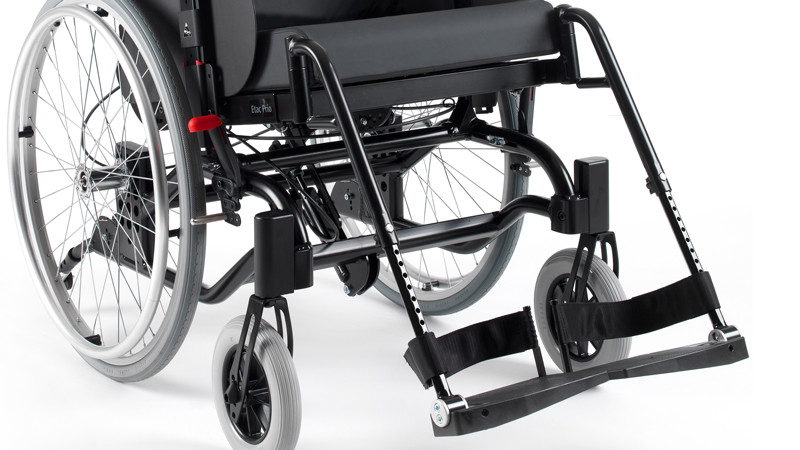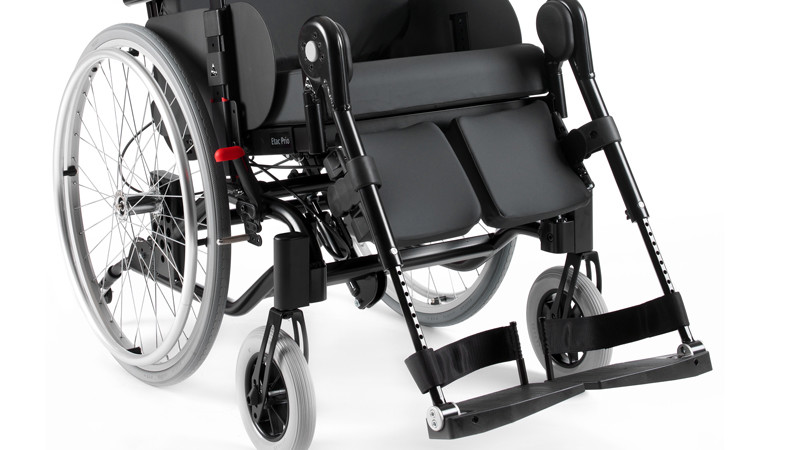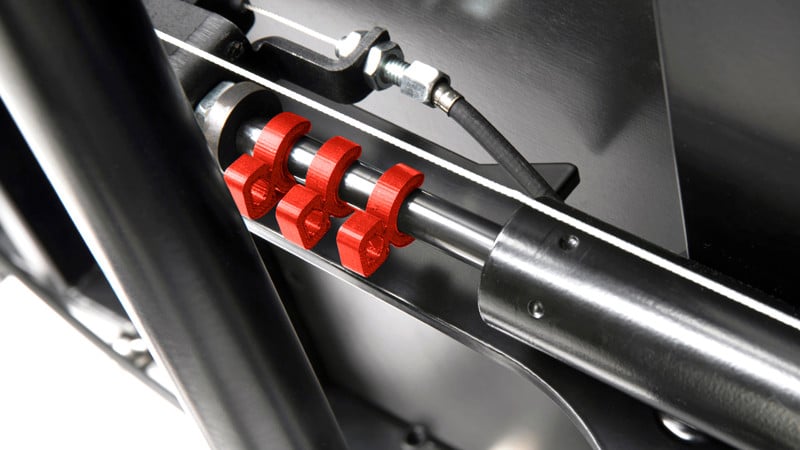Posterior pelvic tilt
- Shape up in Prio 3A

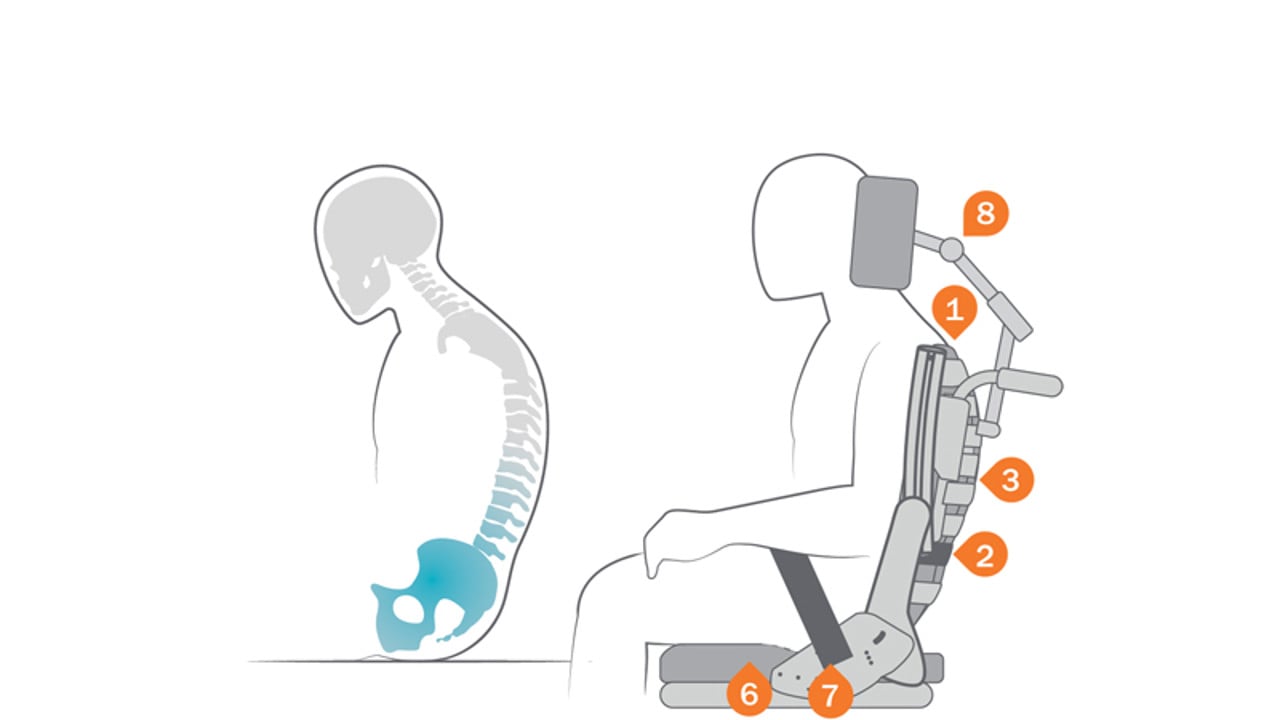
A posterior pelvic tilt is often combined with tight Hamstrings which further complicates achieving a stable and supported position.
Adjust the 3A back support by fine tuning the angles at the lumbar and hip, this will help to support the individual in a more upright posture by allowing a little more space at the hip angle and working with the straps. Then adjust the lumbar angle to bring the individual into a more upright posture in their thoracic trunk for improved head positioning and greater eye contact.
The 3D back cushion (1) adapts perfectly and allow space for a curved back. Adjust the Dynamic Pelvic Support (2) and the tension adjustable back straps (3) to a comfortable and supportive position. Do this adjustment in the active position, so the dynamic pelvic support tension will deactivate in the resting position. Cell Foam Wedges (4) and/or Plush Wedges provide lateral stability.
If the pelvis has a fixed posterior tilt, the active seat to back angle has to be secured. Ensure that the user has back support contact from the PSIS. Use the Back Angle Control (5) to secure this position.
A contoured seat cushion (6) and a Positioning Belt (7) can provide further proximal stability and prevent forward sliding.
Use an adjustable head support (8) since a curved back may bring the head further forward.
Leg support: To avoid that tight Hamstrings pull the pelvis posteriorly, aim for 90º knee flexion. The Add-On foot support extensions (9) create the feeling of a one piece foot support and enable the user to make small movements with their feet on the flat surface. If Elevating Leg Supports (11) are chosen, always tilt and recline the chair before elevating the leg supports. This will reduce the risk for sliding forward due to tight Hamstrings.
Tilt and Recline Positions: Always make sure to assess both the active and resting positions. Secure the positions with Gas Piston Clips (12), Comfort Tilt Lock (13) and Back Angle Control (5).

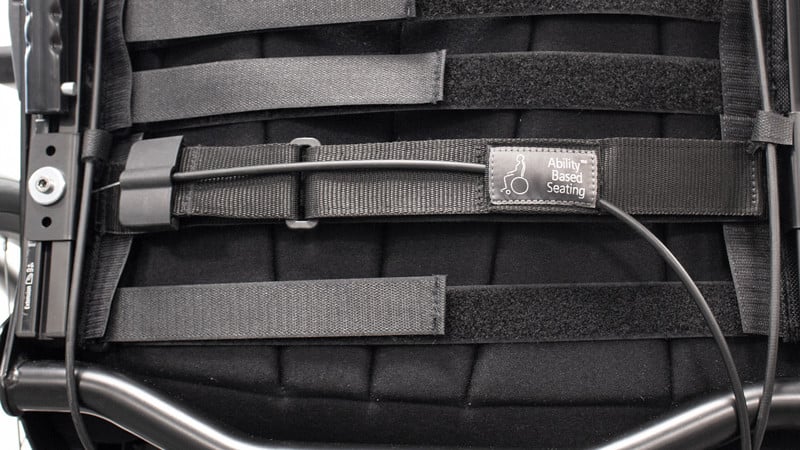
2. Dynamic Posterior Pelvic Support
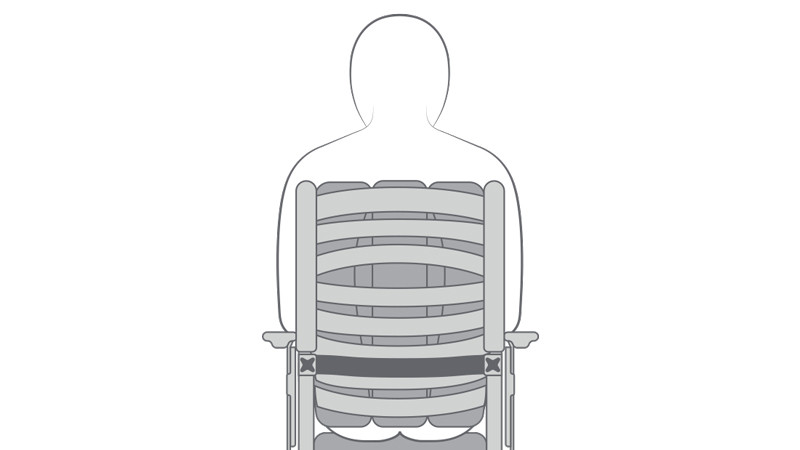
3. Tension Adjustable Back Straps
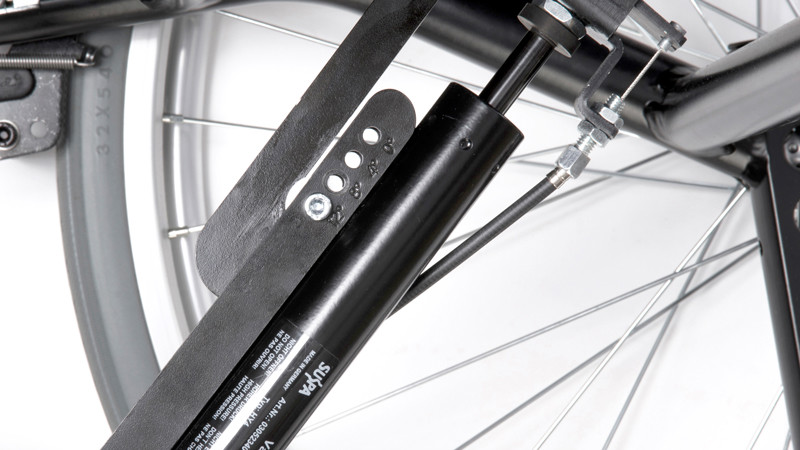
13. Comfort Tilt Lock

See all body shapes and learn how to shape them up.
